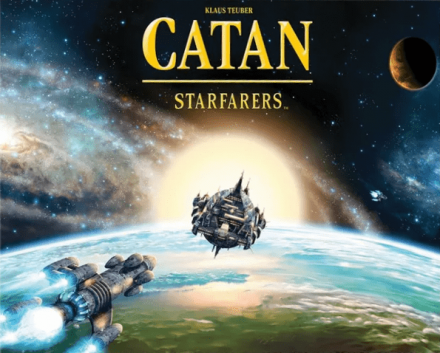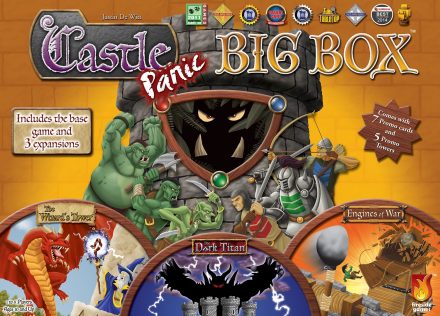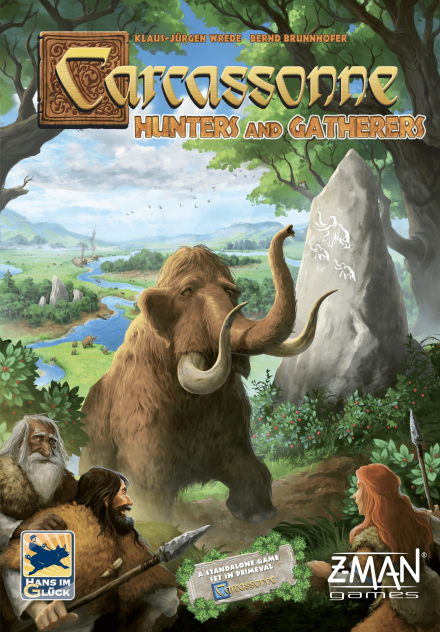In the two-player game Caverna: Cave vs. Cave, each player starts the game with only two dwarves and a small excavation in the side of a mountain. Over the course of eight rounds, they’ll double their workforce, open up new living space in the mountain, construct new buildings and rooms in which to live, and dig for precious metals.
In more detail, each player starts the game with an individual player board that’s covered with a random assortment of face-down building/room tiles and only one space. Some tiles are face up and available for purchase at the start of play. Four action tiles lie face up as well. At the start of each of the eight rounds, one new action tile is revealed, then players alternate taking actions, with the number of actions increasing from two up to four over the course of the game. As players excavate their mountainous player board, new building and room tiles are added to the pool; some rooms can be used immediately when acquired, whereas others require the use of an action tile.
After eight rounds, players tally their points for buildings constructed and gold collected to see who wins.
Game Specifications:
- 1 – 2 Players
- 20 – 40 Minutes
- Difficulty Weight 2.56










